Bizen Pottery, also known as Bizen Ware or Bizen-yaki, is a prominent and long-standing ceramic tradition in Japan that has been produced in Imbe (Bizen Pottery Village) for nearly 1,000 years.

We love Japanese ceramics and porcelain and have visited well-known ceramics towns such as Arita, Kaga, and Yomitan Pottery Village in Japan. While Nami has a preference for colorful Japanese porcelain, I have always been drawn to the earthy and rustic beauty of Bizen Ware (aka Bizen Pottery, Bizen-yaki). Ever since we received a few Bizen Ware cups as a gift many years ago, I have been captivated by their charm and had always desired to visit Bizen Pottery Village.
When we planned our trip to Okayama and discovered that Bizen Ware is created in the nearby town of Imbe, we couldn’t pass up the opportunity to explore Bizen Pottery Village.
What is Bizen Ware
Bizen Ware is a rustic pottery with an elegant and noble quality made in the Bizen area (Okayama Prefecture) with a reddish and brownish color. What sets them apart from other Japanese ceramics is that they undergo the firing process unglazed and fueled by pine wood for a duration of 8 to 20 days. The temperature of the kiln reaches as high as 2282ºF (1250ºC) and the pottery becomes naturally glazed with pine ash.


Depending on the placement of the pottery within the kiln during the firing process, three distinct types of Bizen Ware patterns emerge:
- Sangari – Pottery located on the kiln’s floor, shielded from flames and ash, resulting in blue and grey colors.
- Hidasuki – Rice straw-wrapped pottery resulting in red streaks.
- Gomma – Pine wood ash landing on pottery inside the kiln resulting in sprinkled sesame look on the pottery.
Click here to learn more about how Bizen pottery is created from clay through the firing process.



Bizen Ware possesses a substantial and thick feel, setting it apart from most Japanese pottery. Each finished piece is slightly different from the coloring to the finish, reflecting the beauty of individualism. As it’s used over time, the color and texture continue to change as if it’s a living product.

History of Bizen Ware
This traditional Japanese craft started almost 1,000 years ago during the Kamakura period (1185-1338). Prior to that time during the Heian period (794-1185), pottery was mostly used by the wealthy and for religious purposes. The design tends to have thin walls and delicate features.
Starting the Kamakura period, ceramics trends started changing and became designed for daily use. Over the next 300 years, Bizen Ware became one of the most popular ceramics in Japan due to its durability and water-preserving qualities. It continued to flourish into the 16th century but the craft nearly disappeared as porcelain became the more popular ceramic, as well as Japan’s westernization influence in the mid-1,800s.
After WWII, Kaneshige Toyo and other masters of Bizen Wares’ revival efforts allowed it to prosper again.


Imbe (Bizen Pottery Village)
Though known as Bizen pottery, most of the kiln and pottery shops that produce the pottery are located in Imbe.

Imbe is about a 1-hour train ride from Okayama Station to Imbe Station on JR Ako Line. Adjacent to Imbe Station stands the Bizen Pottery Museum, which unfortunately was closed for remodeling in May 2023 and is scheduled to reopen in April 2025.
The museum offers insights into the history of Bizen ware and exhibits works by renowned artists, including Japan’s living national treasures.





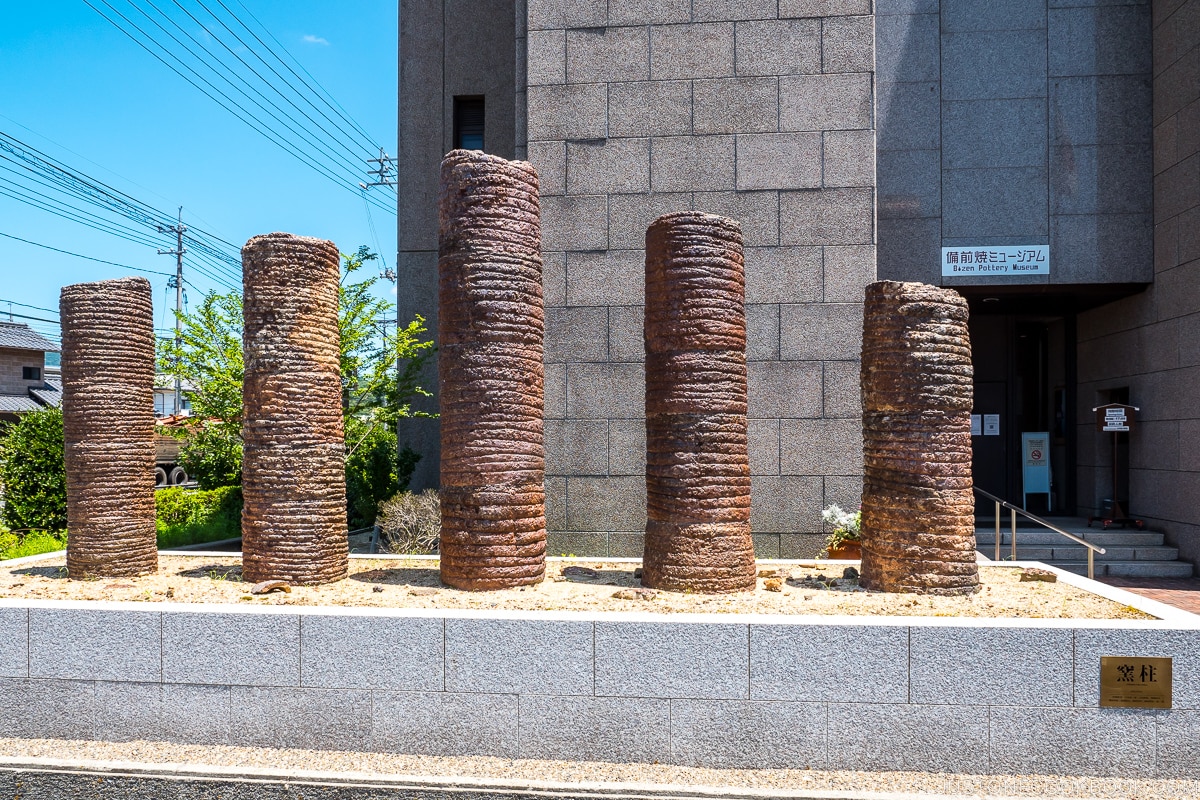
Across from the train station lies an area housing numerous Bizen Ware pottery workshops and ceramic shops. These establishments can be easily spotted with their red brick chimneys dotting the landscape.
A short walk from the station will lead you to these stores, where each offers a unique selection of pottery crafted by skilled artisans. We thoroughly enjoyed browsing through the many shops, exploring their bowls, vases, and plates.





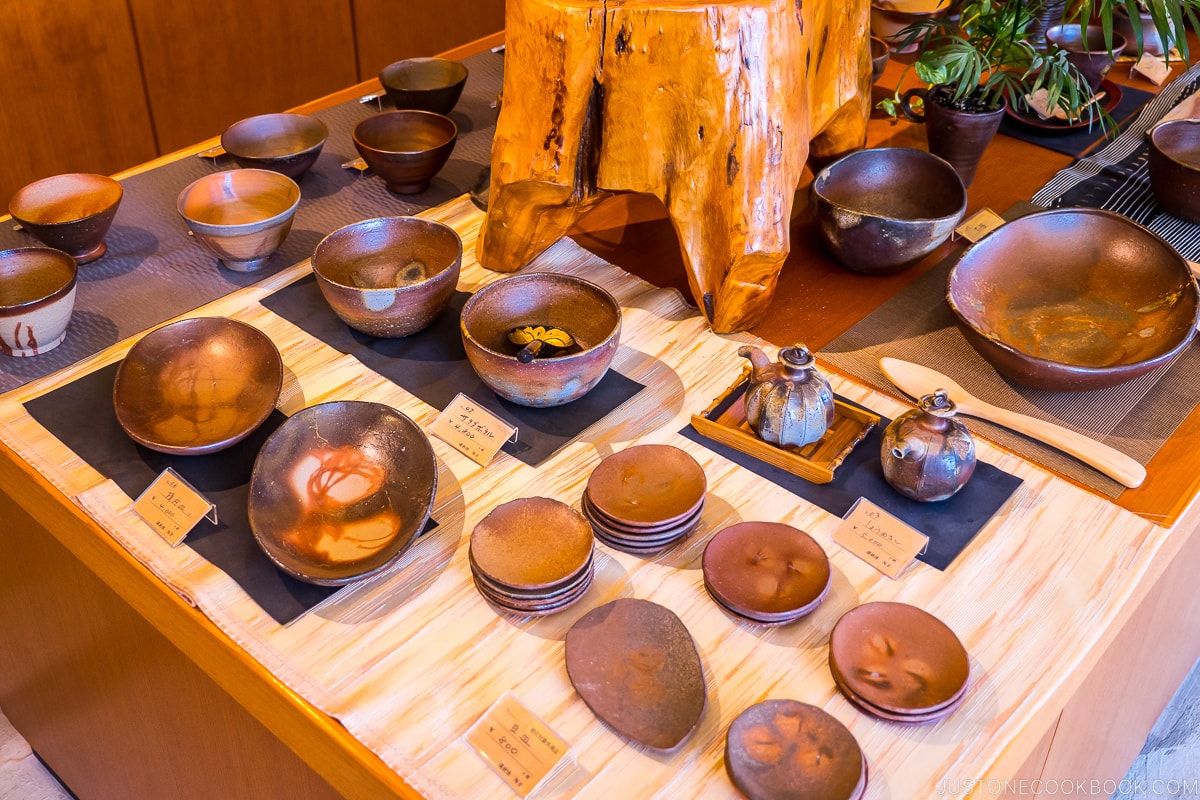

Some of the stores also provide visitors with the opportunity to experience pottery-making firsthand through pottery classes and workshops.
Historic Tempo Kiln
Towards the back of the Pottery Village is the historic Tempo Kiln. During the peak of Bizen Ware in the late 1500s, the kilns were as large as 150 feet long (50 meters). Although these large kilns have vanished, stone pillars now mark their locations.
During the Tempo period (1830-1843), smaller kilns were built to improve efficiency and decrease the number of days required to fire. Several of these kilns were built, and one such kiln, the historic Tempo Kiln, remained in use until the 1940s. While the Tempo kiln has largely decayed over time, the local Bizen ware society is actively involved in its preservation.

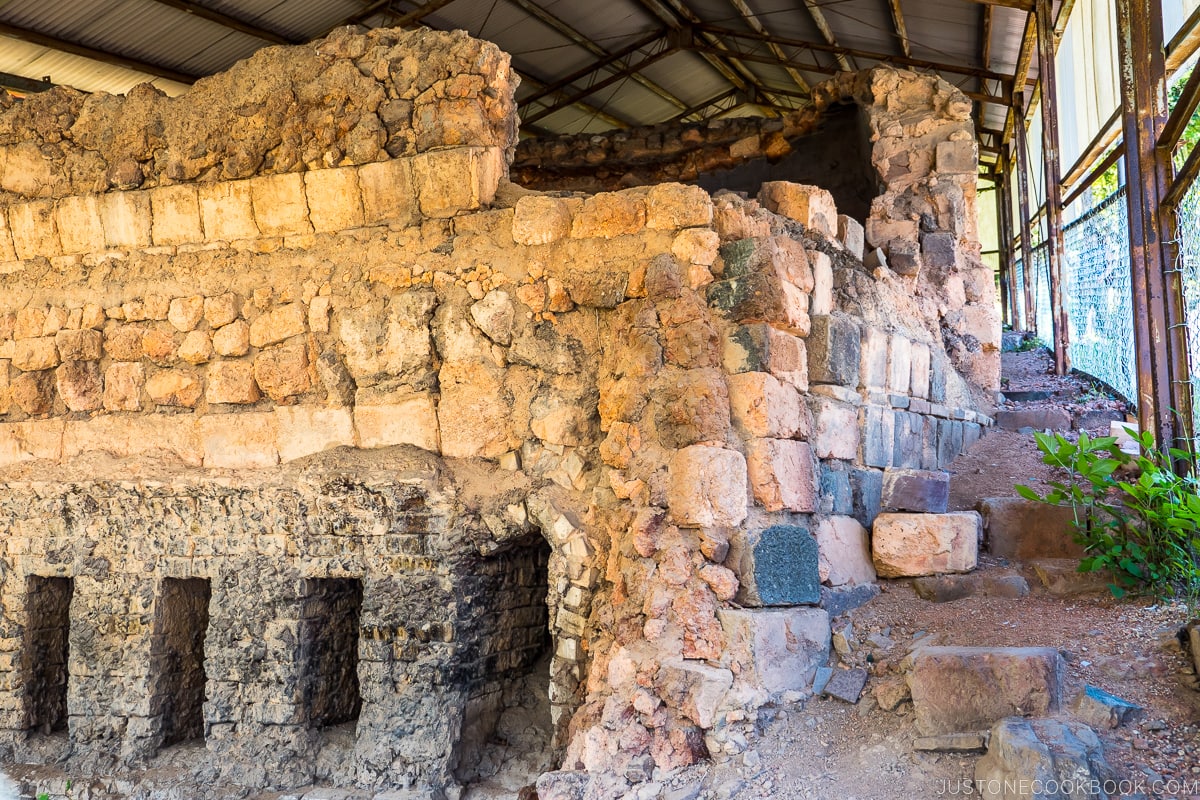



Futaba Shokudo Restaurant
There are not many dining choices in Imbe so we ate at Futaba Shokudo near the station. It’s a Japanese diner offering classic Japanese diner food. They include yaki-udon, okonomiyaki, and various stir-fry over rice.


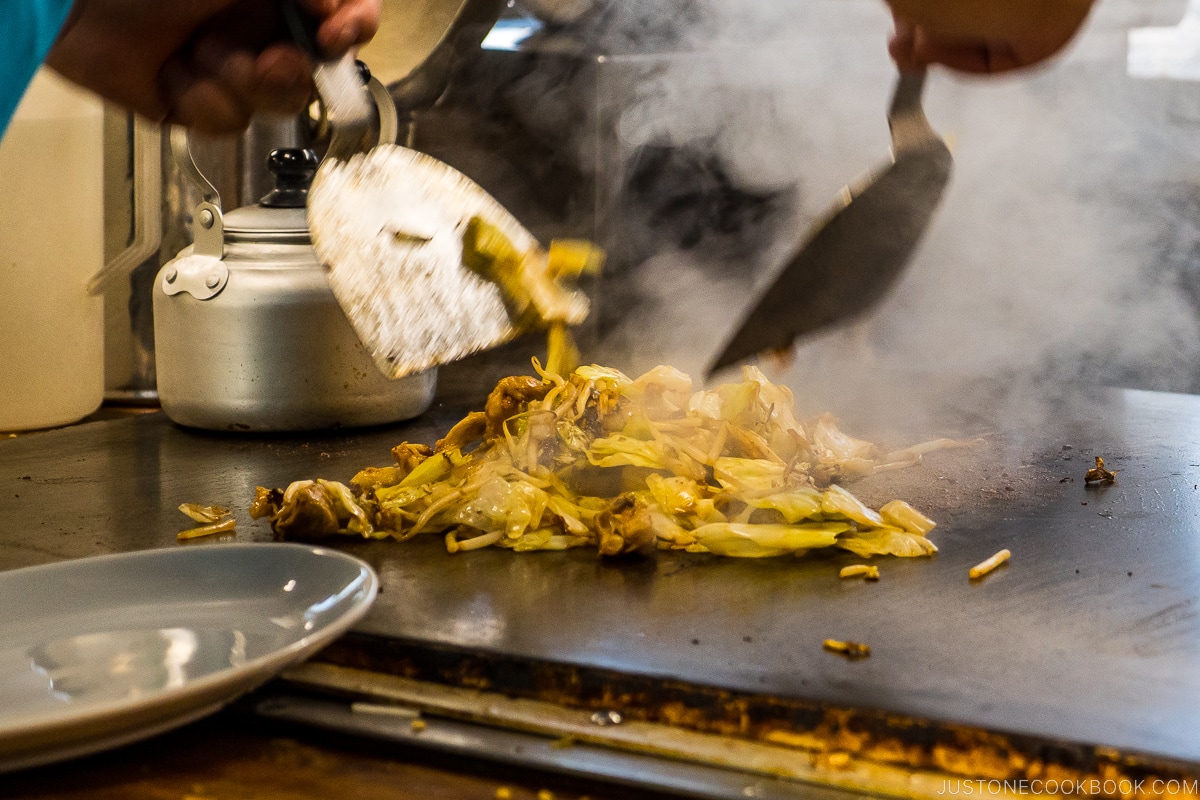


If you have an interest in delving deeper into the world of Bizen pottery or exploring the artisan shops, we highly recommend visiting Imbe when you’re in the Okayama area. Additionally, there is an annual Bizen-yaki festival held in October, during which potters offer their works at discounted prices.
Find yourself with some spare time while at the Imbe train station? Be sure to check out the large gallery showcasing works from nearby kilns.




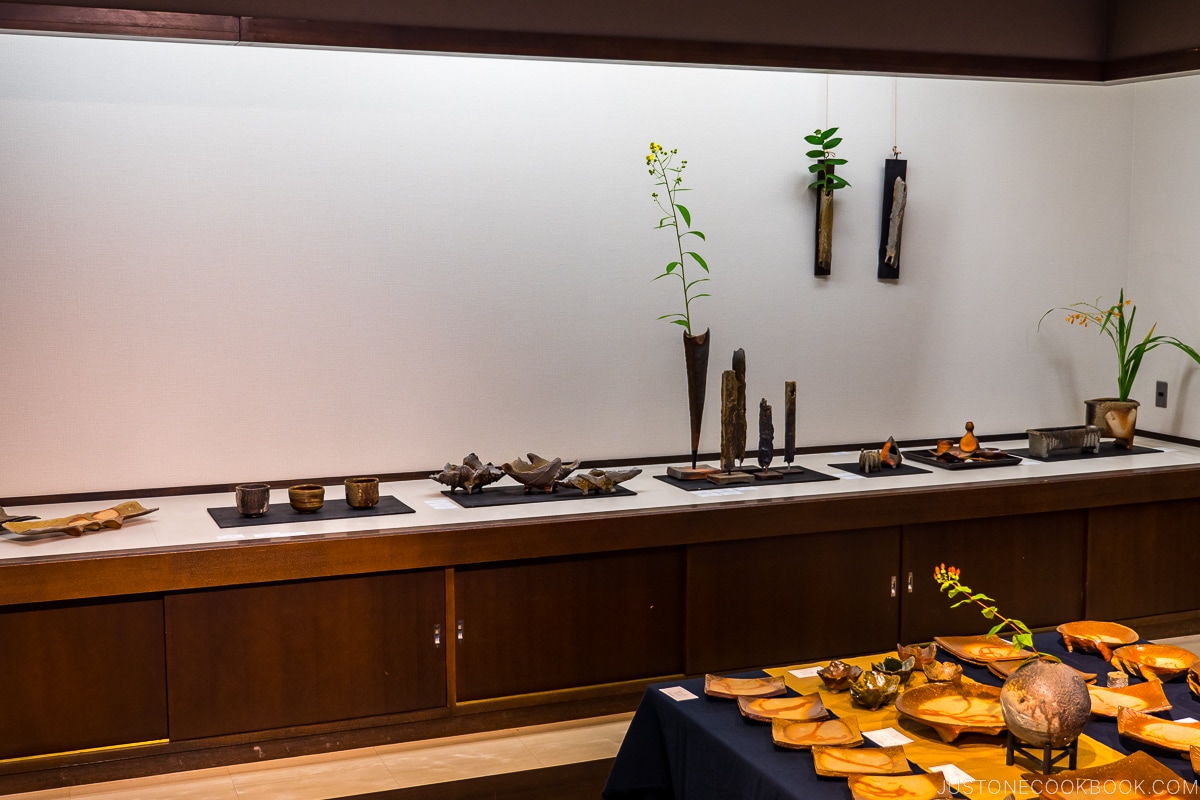









As a former resident of Okayama, I’m familiar with Bizen yaki and have a few pieces. I prefer pottery from Nagano but understand that a lot of people prefer Bizen’s rustic look. There’s a restaurant in town called Meat Up Bizen that’s worth visiting.
The Osafune Sword Museum and sword-making place are not too far and a stop on the same train line, but are a bit tricky to get to without a car or a taxi (nearest train stop is Kagato but it’s unstaffed; just a platform really). Some Japanese (or Google Translate) would probably be necessary.
Thanks for your great information. I hope to get there this September. If l wanted to stay one night would there be somewhere close to the station and pottery shops?Also would it be best to go on a weekend? Thanks you.
Hi Wendy, Imbe is like a village so there aren’t many hotels nearby. We would recommend staying in Okayama and also visiting Kurashiki nearby.
Is it Imbe or Inbe like on the map?
Hi there! If I write it in roman-ji, it’s Inbe because ん is written “n.” However, people outside of Japan would write it Imbe, just like konbu (こんぶ)and tenpura (てんぷら) became kombu and tempura in English. I noticed that the English train station sign on the platform said Imbe as well.
https://en.wikipedia.org/wiki/Imbe_Station
You really should time your visit to Imbe for the Bizen Pottery Festival. Normally held the third weekend in October and always a fun time with lots of great pieces at great prices. We’ve gone every year for the last 14 – except for the days of the plague – and had to buy a new dish dresser to hold all the pieces. Oh, fortunately, I do live in Okayama.
Hi Deb,
We’re so jealous you’re close by and are able to attend. Perhaps once the kiddos are in college we’ll be able to travel to Japan more freely and attend the pottery festival.
Bizen ware is my favorite of all the Japanese pottery. Wished I’d known Imbe existed while living in Tokyo in the late 90’s. Have been given as gifts and purchased several pieces all prized and treasured. Just love the earthiness and the unique feel of each! Imbe will be my next “bucket list” travel adventure on my next trip to Japan! Thank you for sharing and the pictures….will be very hard to keep from overbuying! Maybe 1 piece from each store!!!
Hi Linda,
So happy to hear Bizen is your favorite as well. If the timing works out you can attend the Bizen pottery festival in Oct.
What a dream! Thanks for sharing! It brought back happy memories of my time as an active potter. I miss those days.
Hi Nancy,
Thank you so much for stopping by to reading the post. We tried pottery before in Japan and it was so difficult but fun.